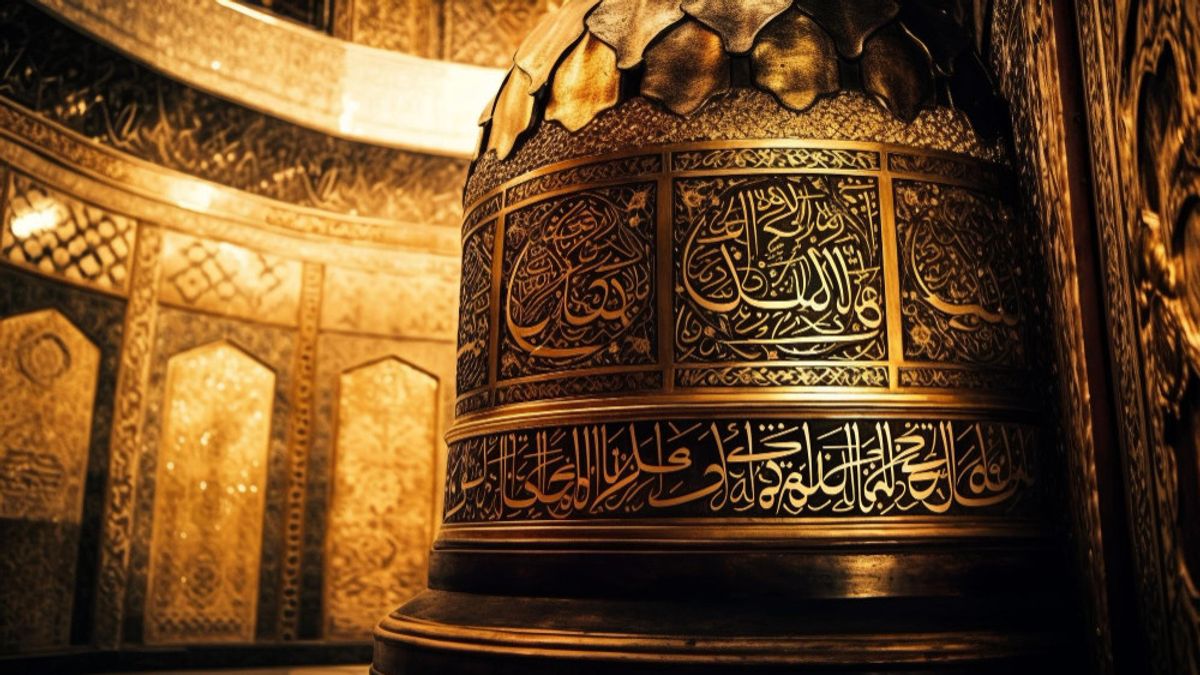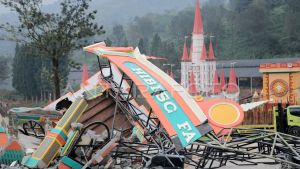YOGYAKARTA - Prophet Ibrahim is a prophet who is special in Islamic teachings. He is also known as a prophet who is greatly glorifyed by Allah for his extraordinary obedience. Many Muslims wonder, where is the location of the tomb of Prophet Ibrahim?
So noble, the figure of Prophet Ibrahim in the Koran is mentioned up to 69 times. Prophet Ibrahim Alaihissalam was also nicknamed the father figure of the Prophets. The life story of Prophet Ibrahim teaches many important values for Muslims, ranging from faith, sincerity, patience, piety, and obedience.
One of the things that made Allah Subhanahu wa Ta'ala even more in love with Prophet Ibrahim Alaihissallam, until he was nicknamed Kholilullah (God willing), was when ordered to slaughter his son Ismail. Prophet Ibrahim did it solemnly.
SEE ALSO:
Prophet Ibrahim was born in 2510 before moving in Iraqi territory. Regarding his death, Prophet Ibrahim died at the age of 175 years. So where is the tomb of Prophet Ibrahim?
Prophet Ibrahim's tomb is in Al Khalil, the city of Hebron, in the Palestinian territories. In Arabic, the word 'Hebron' means Al Khalil or the title given to the Prophet.
The location of the Prophet Ibrahim's grave is about 30 meters from the south of Jerusalem, Palestine. The tomb is in a cave called the Makhpela Cave (Machpelah or Makfilah). The cave building is shaped like a mosque, so it is called the Ibrahim Mosque.
Many people are mistaken, thinking that Prophet Ibrahim Alaihissalam was near the Kaaba. Not a few people think that his grave is not far from Multazam, where Muslims often pray when performing the pilgrimage.
At that location there were footprints of Prophet Ibrahim Alaihissalam seen in a rock, measuring a depth of 10 cm, a length of 27 cm, and a width of 14 cm. This stone was used by Prophet Ibrahim to stand when building a higher upper part of the Kaaba.
The misunderstanding regarding the footprints as the tomb of Prophet Ibrahim may be supported by the word of Allah Subhanahu wa Ta'ala in the Qur'an Surat Al Baqarah Paragraph 125:
You can't help yourself, you can't help yourself, you can't help yourself, you can't help yourself, you can't help yourself, you can't help yourself, you can't help yourself, you can't help yourself, you can't help yourself, you can't help yourself, you can't help yourself, you can't help yourself, you can't.
"And (remind), when We made the house (Baitullah) a gathering place for people and a safe place. And make it a place for maqam Ibrahim to pray. And we have ordered Ibrahim and Ismail: 'Clean My house for the people who are thawaf, who are iktikaf, who are congregants, and those who prostrate'.
In this verse, there is the term "makam Ibrahim" which is used as a place for prayer, namely the Kaaba, where people carry out the pilgrimage. Maybe this is what makes some people think that the footprints of Prophet Ibrahim Alaihissalam are his grave.
However, the explanation in this verse interpretation is actually different. The interpretation states, "(And when We made the Baitullah) namely the Kaaba (as a place of return for humans) means as a gathering place from various directions (and a safe place) meaning to be safe from persecution or attacks that may have occurred elsewhere. For example, someone once found the killer of his father there, but he refrained from taking revenge because this place was sacred.
The next command reads: (And make it) "O man (some maqam Ibrahim) is the stone where Prophet Ibrahim Alaihissalam was founded when building the Kaaba (as a place of prayer), which refers to the tawaf sunnah prayer behind the maqam. In another qiraat, this verse is in the form of a news sentence, "and they make it."
It was also mentioned, (And we ordered Ibrahim and Ismail) (clean up my house) from infidelity (for tawaf, iktikaf) people, namely those who live there, as well as (people who are congregating and prostration), namely those who set up prayers. "
Based on this interpretation, "maqam" does not mean the grave or place where Prophet Ibrahim Alaihissalam was buried, but refers to the stone where he was standing. Wallahu a'lam bisshawab.
That's a review of the location of Prophet Ibrahim's grave. So far, not a few people have mistakenly thought that they believed in the tomb of Prophet Ibrahim near the Kaaba. Even though eating is actually in the city of Hebron, Palestine. Also read the history of the end of Prophet Ibrahim.
Stay up to date with the latest domestic and other overseas news on VOI. We present the latest and updated information nationally and internationally.
The English, Chinese, Japanese, Arabic, and French versions are automatically generated by the AI. So there may still be inaccuracies in translating, please always see Indonesian as our main language. (system supported by DigitalSiber.id)

















